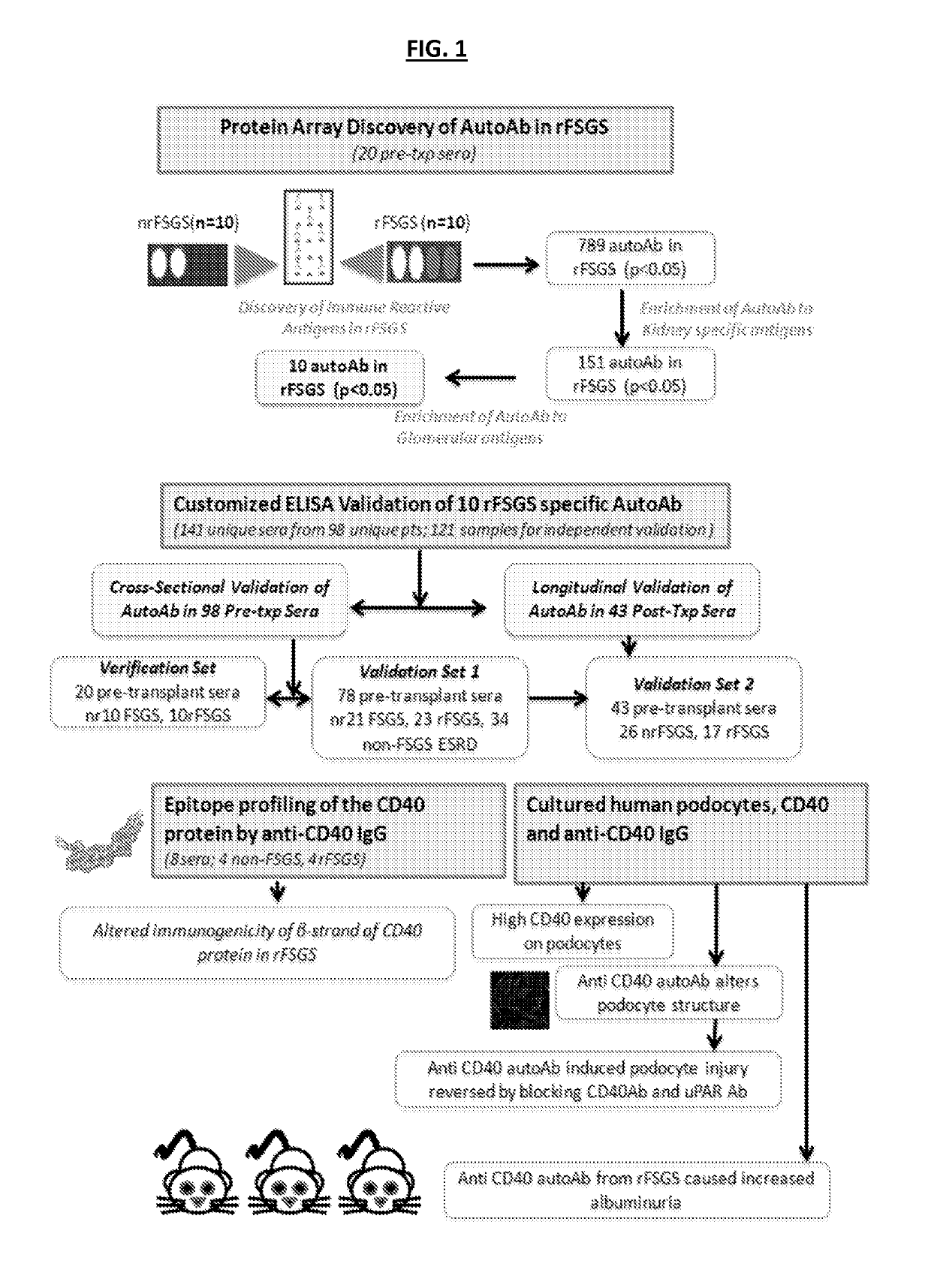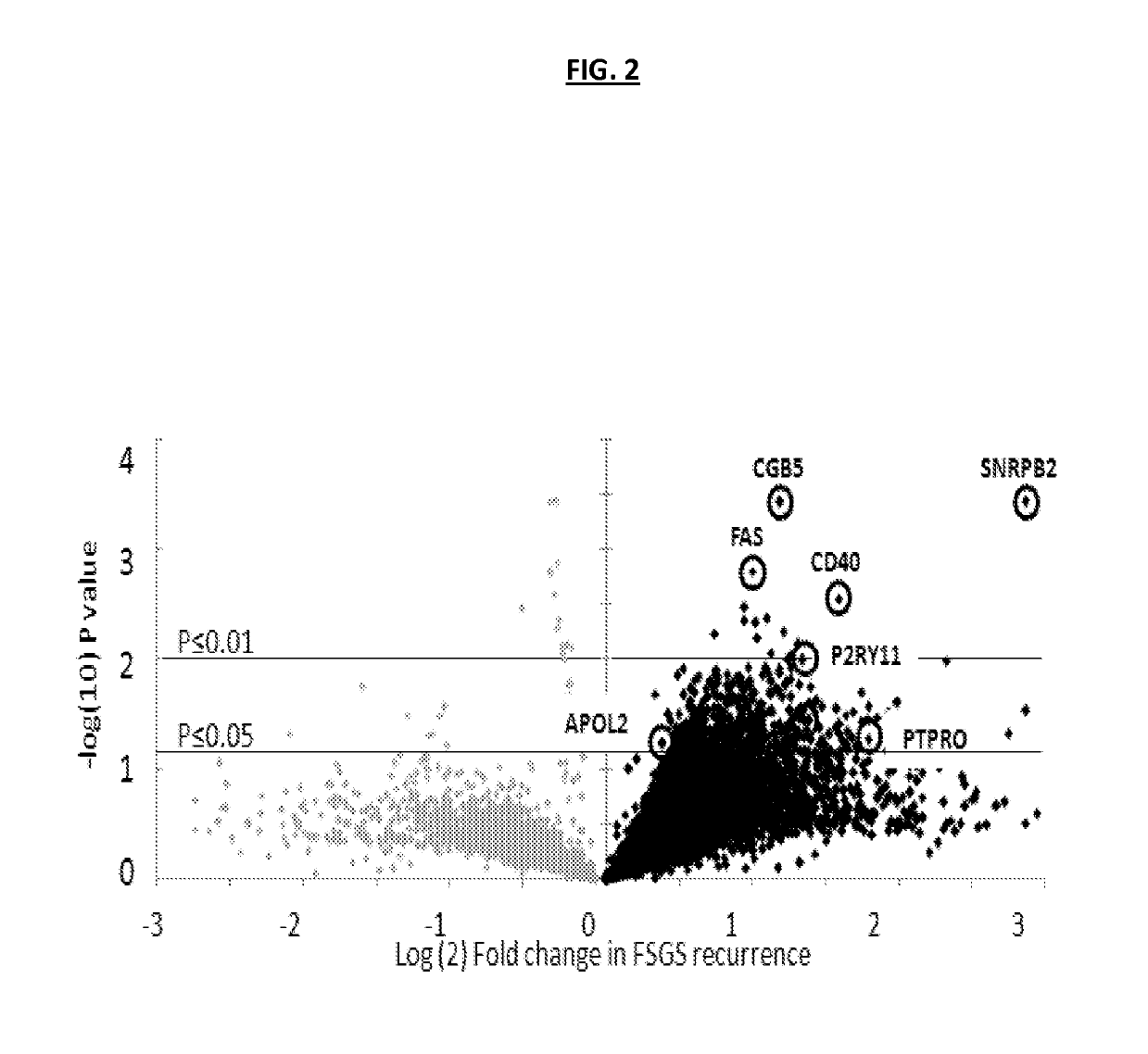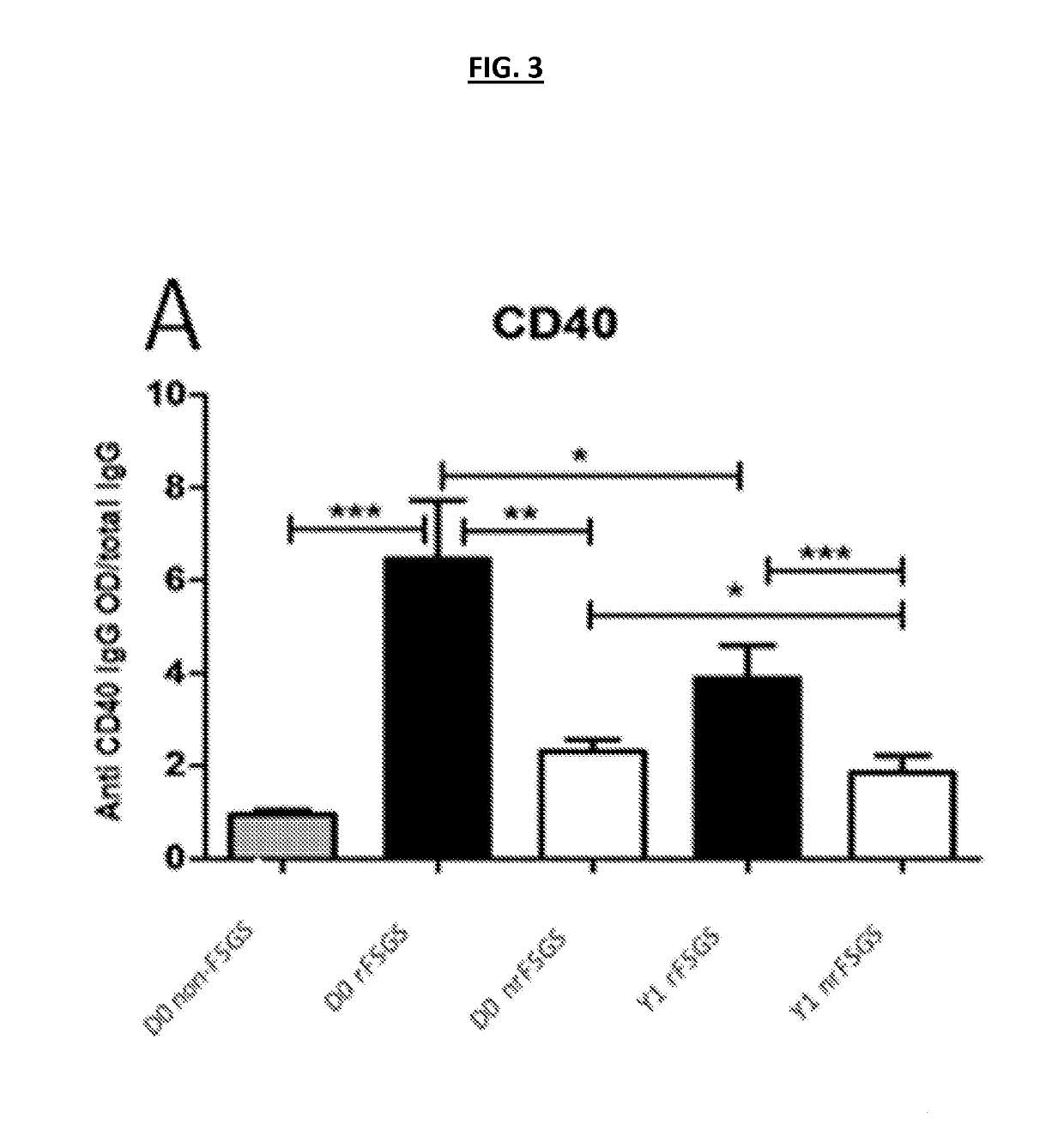Methods and compositions for the prediction and treatment of focal segmental glomerulosclerosis
a technology of glomerulosclerosis and compositions, applied in the direction of immunoglobulins, instruments, peptides, etc., can solve the problems of significant clinical challenges, potential detrimental course toward the loss of renal function, and subsequent treatment, and achieve the effect of positively affecting graft function and survival
- Summary
- Abstract
- Description
- Claims
- Application Information
AI Technical Summary
Benefits of technology
Problems solved by technology
Method used
Image
Examples
example 1
Materials and Methods
[0179]Patients and Samples:
[0180]141 sera samples, obtained prior to and one year after renal transplantation, were processed from 98 unique renal transplant patients, enrolled from 5 international transplant centers: Transplantation Renale Adulte, Hopital Necker-Enfants Malades (Paris, France); John Hopkins Hospital (Baltimore, Mass.), and Nephrology and Renal Transplantation, University Hospitals Leuven (Leuven, Belgium). The study was approved by the Institutional Review Board of California Pacific Medical Center, Stanford University, Necker, John Hopkins and Leuven for biobanking and samples analysis.
[0181]Immune Response Biomarker Profiling by Protein Microarrays and ELISA Validation:
[0182]The ProtoArray® human protein microarray was used for profiling serum IgG autoantibody in 20 pre-transplant sera from 10 patients with and without rFSGS. The Meso Scale Discovery® (MSD) technology was used for customized ELISA validation for elevated antibody titers in rF...
example 2
Identification of Antibodies Associated with rFSGS after Renal Transplantation
[0191]To identify potential autoantibodies associated with rFSGS, a discovery set of pre-transplant sera was used. The discovery set was from from 20 unique patients with biopsy confirmed diagnosis of FSGS as their cause of End Stage Renal disease (ESRD), of which 10 had progressed to rFSGS within the first post-transplant year (mean time to recurrence 36 days) and 10 FSGS patients had not had recurrence of proteinuria or histological disease after transplantation (nrFSGS). At transplant, these two groups of patients were indistinguishable regarding demographical or clinical parameters (Table 1). Recurrence was defined by heavy proteinuria with biopsy confirmation of FSGS with glomerular sclerosis and podocyte fusion and injury without evidence of acute rejection, glomerulitis or allograft glomerulopathy. Sera samples were assayed on high-density protein microarrays (Protoarray v5.0; Life Technologies). FI...
example 3
ELISA Validation of Antibodies that can Predict rFSGS after Renal Transplantation-Cross-Sectional and Longitudinal Analyses
[0193]Customized ELISA assays were generated as previously described [18] for the autoantibodies shown in Table 2. 132 unique sera were processed for customized ELISA assays for all 10 autoantibodies in Table 2. Sera were obtained from 55 patients with FSGS as a cause of ESRD prior to transplantation; 27 of these patients had rFSGS within the first year post-transplant and 28 did not. Patients were demographically matched (Table 1) (FIG. 1). In a subset of these patients, follow-up sera samples were available at one year post-transplantation (17 with rFSGS in the first post-transplant year and 26 patients without recurrence); the customized ELISA assays for all 10 autoantibodies were also run on these samples to obtain a longitudinal analysis of antibody titres in the first post-transplant year. ELISA analyses confirmed that antibodies against CD40 (p=0.0002), S...
PUM
| Property | Measurement | Unit |
|---|---|---|
| body weight | aaaaa | aaaaa |
| concentration | aaaaa | aaaaa |
| concentration | aaaaa | aaaaa |
Abstract
Description
Claims
Application Information
 Login to View More
Login to View More - R&D
- Intellectual Property
- Life Sciences
- Materials
- Tech Scout
- Unparalleled Data Quality
- Higher Quality Content
- 60% Fewer Hallucinations
Browse by: Latest US Patents, China's latest patents, Technical Efficacy Thesaurus, Application Domain, Technology Topic, Popular Technical Reports.
© 2025 PatSnap. All rights reserved.Legal|Privacy policy|Modern Slavery Act Transparency Statement|Sitemap|About US| Contact US: help@patsnap.com



